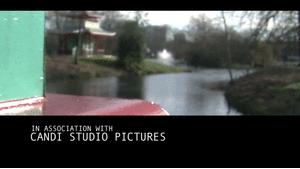Question 1: In what ways does your media product use, develop
or challenge forms and conventions of real media products?
The conventions of a film opening:
Some of the conventions of a film opening include:
- The hook: a teaser of the narrative which grabs the audiences’ attention
- Special effects/ sounds effects
- Music: which is often used to build tension
- The production company's ident
- The titles: these include the production company, main cast, the film's
name, other cast members and the directors. The order in which these appear
varies between films, for example, the actors may appear before the director if
they are more famous.
- In some cases, an insight is given into the main characters of the film
or the location of the thriller may be told.
- The audience are able to have a sense of the film's mood.
During research, I found that thrillers can use a variety of these
conventions depending on the type of film opening. A narrative opening will
usually have a hook to keep the audience engaged, or some insight into the
characters/location. Whereas, title sequences that use stylized editing or
discrete title sequences use special effects and sound effects. Title
over a blank screen do not include these conventions but instead focus on the
titles and in most cases, music.
In all cases, titles are included and the mood of the film is set. The
production company's ident is also always included.
Conventions of title sequences:
 |
| An example of a conventional film opening. |
A conventional film opening starts with the production company ident
and distribution company. This is usually followed by the actors that are
starring in the film, however, if the writer is more famous or well known,
their name will appear first. The placing of the film title varies but it
usually at the beginning to middle of the title sequence - most commonly around
the timing that the actors name's appear. The crew then follows, such as the
director of photography, editor, product designer, music supervisor and
costume designer. The very last titles are the producer and director.
Slight differences in the order mean that the writer may appear towards
the end of the sequence.
Other conventions of a title sequence include that the titles appear in
a plain font in a white or black font (sometimes they may be blue or red too).
The titles are designed not to interfere with the film itself. The size of the
font may differ, for example, information that is more important may be in a
larger font than the rest.
In a conventional title sequence, the titles are placed in the corners
of the screen, or, if it doesn't interfere too much with the film or if there
is no narrative; in the middle of the screen. Titles that appear in the middle
of the screen may be because the cast/crew are famous or it may be because of
the contract between the actors and the production company.
How we have followed the conventions in our film opening:
We followed the conventions of a title sequence by using a plain white
font that doesn't distract from the narrative opening. We also slightly altered
the font size so that the name of the cast appeared bigger than their role in
the film. The titles appear in the corners of the screen
or parallel to the spilt screens. Again, this was to ensure that they
did not distract the audiences attention to what was happening in the opening.
Our titles appear from approximately 2 seconds each as this is how long they appear in a conventional film opening, this is also enough time to read the titles.
Above is a gif of the first 11 titles we included in our thriller opening.
Other ways in which we followed the conventions include:
- The hook we included is at the end of our title sequence, we added a twist showing the elderly lady to actually be the murderer in our film.
- Adding sounds to build tension, including natural sounds and diegetic music.
- The production company at the beginning of the film.
- The location is revealed by including establishing shots.
- An insight into the main character by adding the detectives voiceover.
 |
| Layla's character. |
 |
| An establishing shot of our location. |
How was have challenged the conventions in our film opening:
We challenged the conventions of a film opening by using an upbeat modern song which our jogger was listening too. This set a different mood to most thrillers as the audience were made to feel comfortable and relaxed with the film. This would cause a greater shock at the end of the opening and would hopefully act as a hook to keep the audience engaged with the film.










